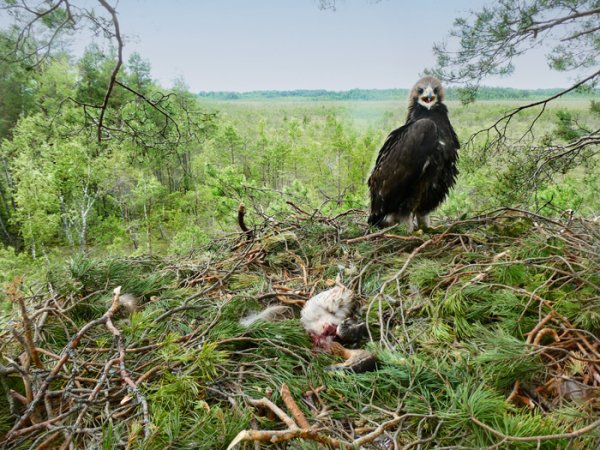
Golden Eagle Monitoring: A Significantly Higher Number of Successful Nests
The monitoring of golden eagles, which is carried out by JSC “Latvia's State Forests” (LVM) in cooperation with experts of the Latvian Nature Foundation, has come to an end. This year, successful eagle nesting was found in four nests, which is significantly more than the previous year.
“Golden eagles are among the rarest species of birds of prey in Latvia, around ten nesting areas are known, and their number is increasing,” says LVM Senior Environmental Expert Uģis Bergmanis.
These eagles nest in large high marshes on islands and peninsulas. The most important food animals for golden eagles during the nesting period are the birds nesting in and near the marshes such as cranes, grouse, mallards, ducks, and plovers, as well as mammals such as martens, hares, and young roe deer, badgers, and raccoon dogs. In winter, golden eagles feed on dead animals.
To promote nesting, artificial nests are built for golden eagles. Birds usually like these nests, and they choose them for nesting.
Within the framework of JSC “Latvia's State Forests” (LVM) environmental education and research project “Birds and Animals in Marsh” everyone interested has an opportunity to watch on-line changes in nature and follow the bird and animal activity in one of the marshes in the north-eastern region of Latvia. This is already the sixth year that every nature friend can follow exciting events in the nest of golden eagles through live cameras, as well as observe the landscape of the marsh in different seasons.
Both rare bird and other animal species, as well as their habitats and biotopes are protected in the areas managed by LVM. Forestry works are limited or stopped in the places of nesting of protected birds, like the black stork, all eagles nesting in Latvia, etc., and micro-reserves and territories for protection of habitats are created for ensuring protection of species. To preserve specially protected forest habitats and protected species of animals and plants, micro-reserves are created; their area is increasing every year.


